
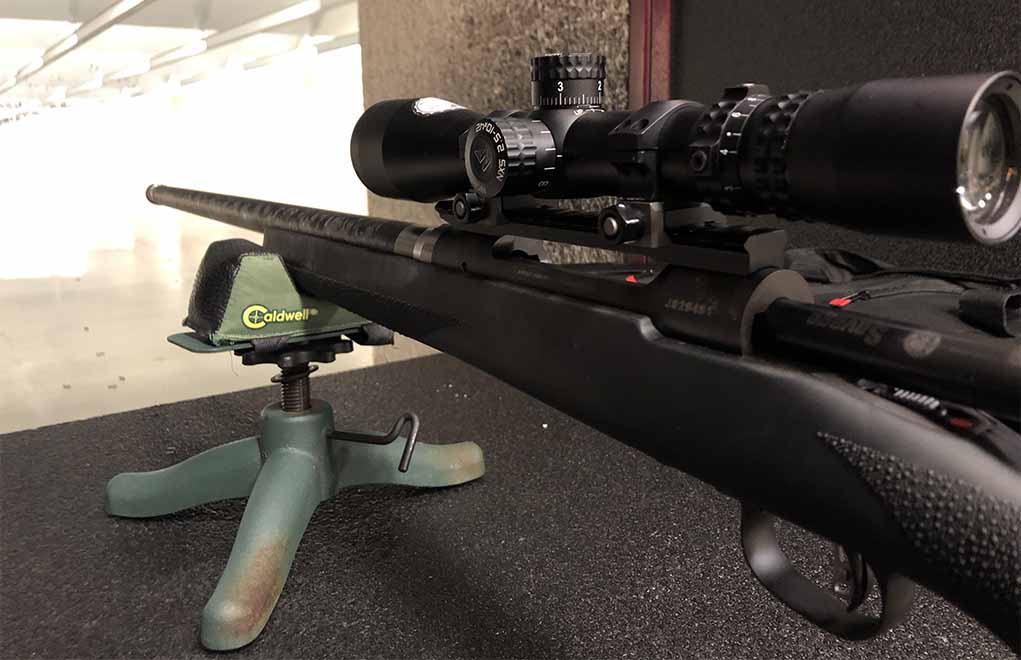
The AR-15 isn't the only rifle that's a snap to jump between calibers, as taking a Savage 110 from .308 Norma Magnum to .280 Ackley Improved proves.
Why The Savage 110 Is So Simple To Modify:
- Savage rifles headspace off the barrel nut, which eliminates the need for a lathe to swap barrels.
- The bolt is modular, so the proper bolt face can be matched to the cartridge's diameter.
- Trigger, magazine, floorplate assembly, stock, etc., can also be modified on a Savage.
- The only limiting factor is you cannot jump between long and short actions.
There are a lot of things my .308 Norma Magnum could do well. Making it past the bouncer at a .280 Ackley Improved-only club wasn’t one of them. Thankfully, it was no ordinary .308 Norma Magnum. No. It was a Savage, which means it can be whatever the hell it wants to be … almost.
Go from a .308 Norma Magnum to a .280 Ackley Improved? Sure thing. All I needed were a few simple tools, some basic parts, a little mechanical common sense and about an hour of my time. One thing I didn’t need, however, was a lathe to transform my magnum long-action rifle into a streamlined .280 Ackley Improved.
But a .308 Norma Magnum to a .280 Ackley Improved? you ask. You can’t do that, Mr. Gun Writer, because those two cartridges use two completely different bolt faces.
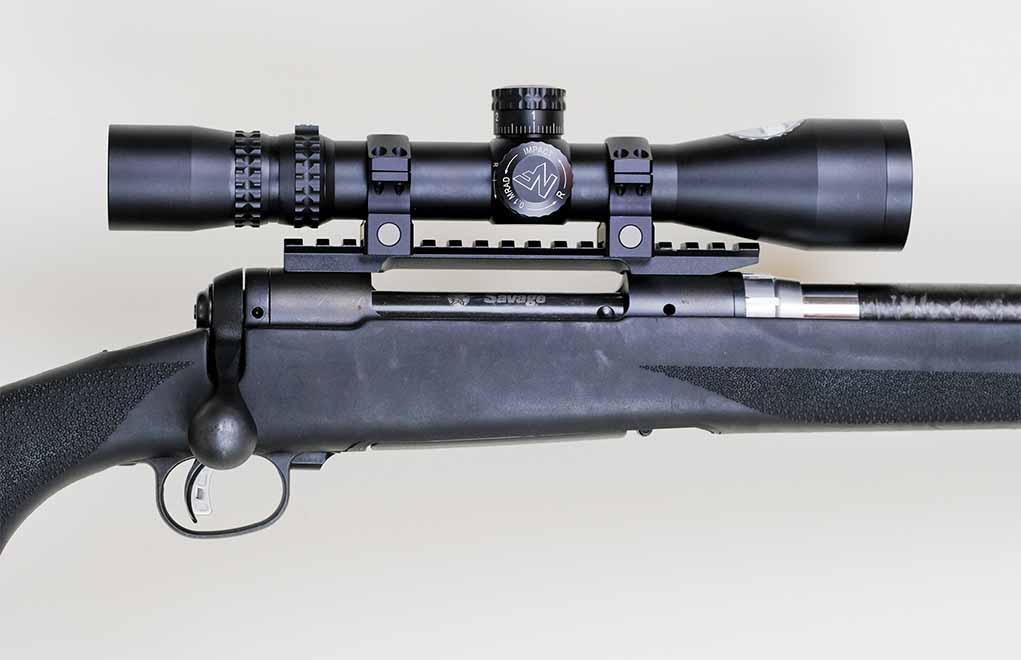
Yes, I’m well aware of this emphatic mechanical fact. I can almost hear some of your heads exploding as you contemplate just how in the world I thought I was going to be able to make a bolt-action rifle with a bolt face sized to .540 work with the much smaller bolt face of a .280 Ackley Improved, which is .470.
Here’s a hint: I’m not. My savvy Savage readers already know how this was going to happen.
A Savage 110 Series rifle can do more than just accommodate a lathe-less barrel swap between equal cartridge bolt faces, such as a .270 Winchester to a .30-06 Springfield or a 6.5 Creedmoor to a .338 Federal. The Savage bolt, itself, is just as modular. You can physically swap out the bolt face of a Savage 110 Action bolt assembly—again, without a lathe. To do so requires a complete disassembly of the Savage bolt assembly to parade rest, and then you simply reassemble it with the bolt face size you need for your cartridge.
The Modularity Factor
In fact, you can change just about anything on a Savage rifle yourself, including the barrel, bolt face, trigger, magazine, floorplate assembly, stock, etc. You can’t make a short-action into a long-action (or vice versa), but, hey—boundaries build character.
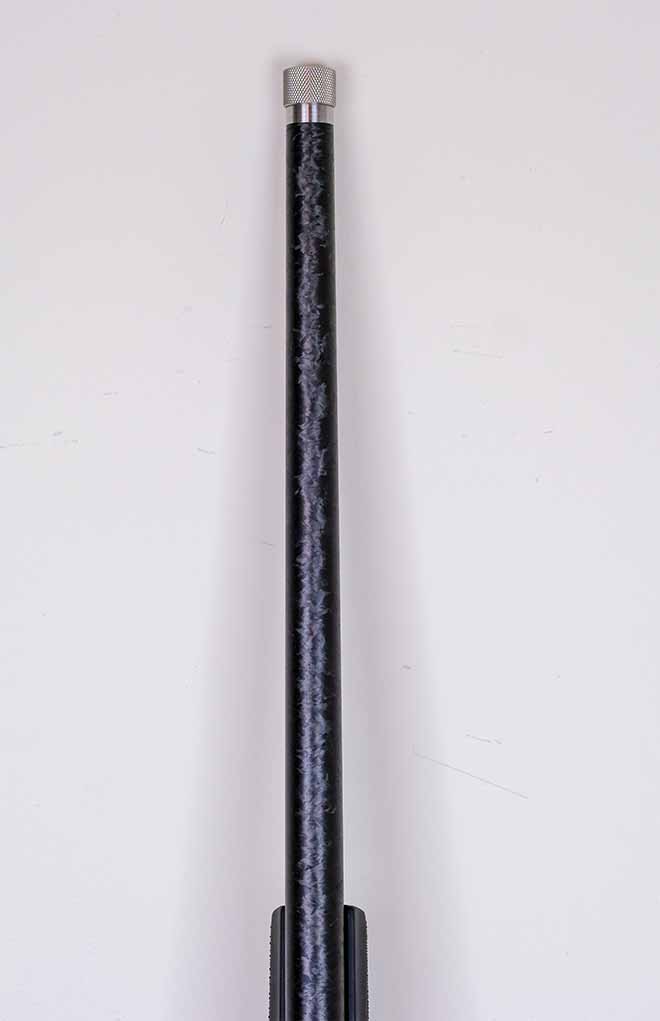
The modularity of the Savage 110 Series bolt-action rifle might not have been designed to accommodate a virtually limitless availability of cartridge configurations for Savage do-it-yourself garage gun gurus, but it does. Lots of Savage rifle owners mix and match gun parts on their rifles because they can, because they think they should or simply out of curiosity. Why doesn’t matter. (America; that’s why.) Take note: Savage Arms does not endorse anyone other than a qualified and properly equipped gunsmith to perform maintenance on its firearms … but you knew I had to say that.
This rifle was technically built off a Savage 111FC Sporter Magnum action. Its differences from a straight-up 110 rifle are subtle and peripheral, aside from the exact same barrel and action, which are the heart of the Savage rifle I have learned to love. The biggest deer, a massive Idaho muley, I ever killed was shot with a Savage 9.3x62mm Mauser. My biggest African plains game, a trophy red hartebeest, was taken with a .300 Savage.
Why a .280 Ackley Improved?
Why not? The .280 Remington is one of the all-time classic American cartridges known through the world as an accurate, fast and effective .284-sized choice for shooters worldwide. The Ackley Improved version is about 5 percent more awesomeness.
Let’s take a closer look at both.
Get The Skinny On Savage:
- MSR 10 Hunter: The Savage Way To Take Game
- A Contemporary Classic: The New Savage 110 Classic
- Savage AccuFit: Putting Accuracy Within Reach Of Every Shooter
- A Different .22: Savage B Series Hardwood
- Gun Review: Savage Model 10 GRS Rifle
The .280 Remington began life in 1957 when Remington necked down the .30-06 Springfield to 7mm. Why? A 7mm bullet powered by the .30-06 Springfield case gives shooters a faster bullet with better BCs—and often, better sectional density. Bullet weights ranged from 120 to 175 grains.
Remington’s timing wasn’t the best; its introduction was some 30 or so years after the legendary .270 Winchester had grown deep roots in the hearts and minds of American shooters and hunters. Still, it was a good idea.
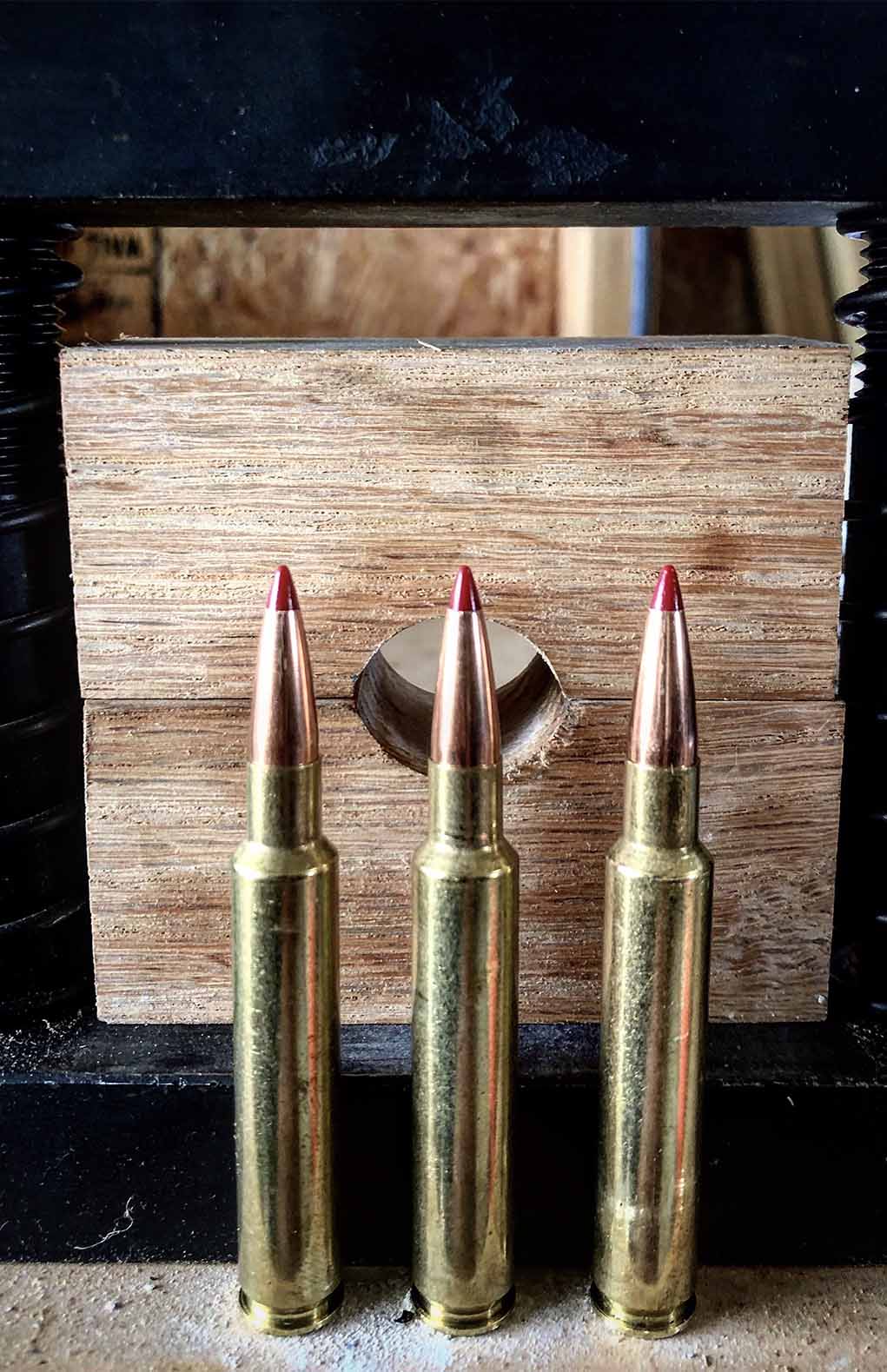
In 1978, Remington tried to rebrand its .280 Remington by changing its name to 7mm-06 and then to 7mm Express, but it caused too much confusion with the red-hot 7mm Remington Magnum. As a result, the company went back to .280 Remington.
Ballistically, the .280 Remington had, and still has, plenty of 7mm “mojo” to get the job done on most critters that Americans hunt to reasonable ranges. Still, if there’s one thing Americans hate, it’s leaving untapped potential on the reloading table.
P.O. Ackley probably grunted when he saw the potential of the .280 Remington, especially after Fred Huntington tweaked it with a 35-degree shoulder bump wildcat called the .280 RCBS. He took the shoulder out 5 more degrees to a 40-degree shoulder and dubbed his creation the .280 Ackley Improved. It was a really good idea.
How much so? Nosler put in the work and the funding to make the .280 Ackley Improved a SAAMI-approved cartridge in 2007. Once built, my 24-inch Savage .280 Ackley Improved pushed Nosler’s 140-grain Ballistic Tip factory loads at a blazing 3,158 fps. According to the Nosler website, that same load from a .280 Remington would only achieve 3,000 fps. As you might expect, heavier bullets lose velocity; but proportionally, the Ackley Improved “turbo” option of the .280 Remington usually gives shooters 100 to 150 fps of difference. Is that gain enough to tweak your .280 Remington? That’s up to you.
Regardless, a .280 Ackley Improved is faster than a .280 Remington with the same bullets, and the case life of Ackley Improved cartridges is better on average than their conventional counterparts. The often-debated wildcat disadvantage of the Ackley Improved aspect to many cartridges has no bearing with the .280 Ackley Improved, because Nosler, Hornady and Federal all make factory-loaded ammunition for it. In short, if you want the near-ballistic equivalent to a 7mm Remington Magnum without the “magnum” fuss in recoil, ammunition costs and bulk, you ought to strongly consider adding a .280 Ackley Improved to your stable of rifles.
The Savage 110 Transformation
Changing the bolt head on my once quite-capable .308 Norma Magnum to accommodate the smaller .280 Ackley Improved wasn’t all I had to do to transform my Model 111FC action-based Savage into the Ackley Improved version. I absolutely had to completely change the barrel of the rifle. Sandpaper, wood putty and some Bondo weren’t going to work here.
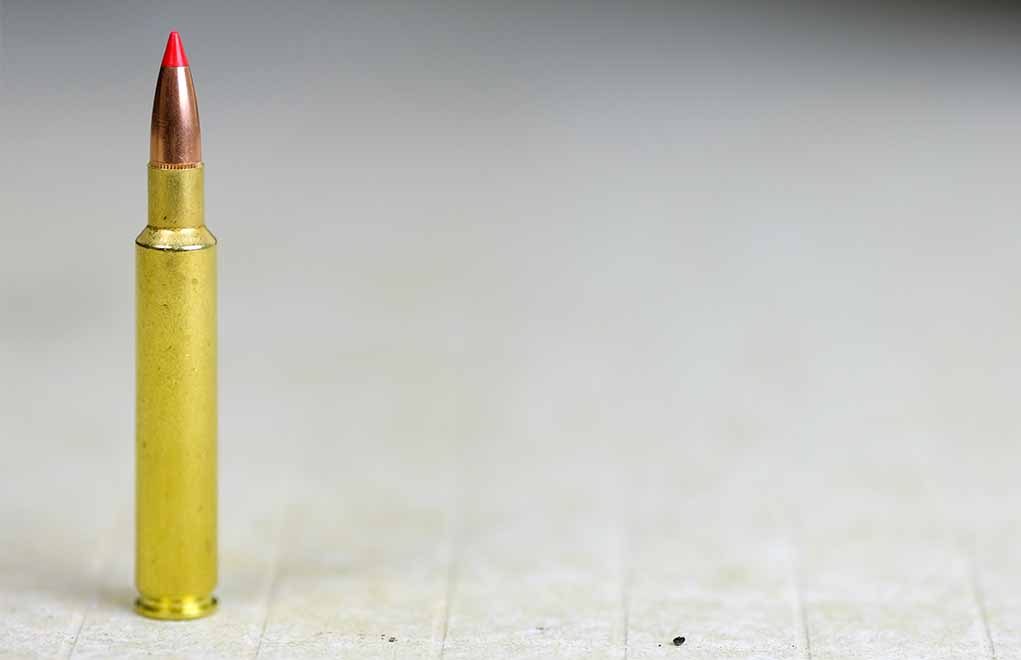
Again, the Savage platform makes customizing your rifle easy—and barrel manufacturers know it. Most all barrel makers make some sort of Savage barrel, and most of them are pre-chambered and ready to head space. Savage rifles head space off the barrel nut, which is what eliminates the lathe and the expert gunsmithing skills needed to re-barrel more-conventional rifles.
I reached out to Louisiana-based CarbonSix Barrels to create my very own .280 Ackley Improved. Carbon barrels have always fascinated me, and CarbonSix’s Gene Gordon is one of the most intelligent, helpful and accommodating people in the gun industry. He soon had a 24-inch, 1:9 twist, #5 contoured carbon-fiber barrel created from a McGowan barrel core.
Why Carbon Fiber?
According to CarbonSix, “Carbon fiber-wrapped barrels can provide a decrease in weight, added rigidity, great weather durability and improved harmonic damping.”
Great. But, can they be more accurate than their all-metal-barreled brothers? CarbonSix has this to say: “Carbon fiber-wrapped barrels can be more accurate due to the harmonic dampening and reduced barrel whip. We guarantee ½ MOA or better with proper load development and proper barrel installation. The majority of our customers see ¼ MOA once they find the best load for their setup. Our accuracy is due to our precise machining, attention to detail, our proprietary steel core that lends itself to exceptional harmonic dampening and our carbon-fiber process. Combined, these yield a very light, rigid, accurate and repeatable barrel.”
If carbon barrels are so great, why doesn’t everyone use them? That’s one I can answer: They’re expensive.
CarbonSix says it much more eloquently. “When should shooters not choose a carbon barrel for their needs? When the cost-to-benefit does not fit their needs. There isn’t any situation [for which] our carbon fiber-wrapped barrels would not be a benefit of some sort. That does not mean that everyone feels the added cost is worth those benefits.”
Meh; it’s only money, right?
Back to the Rifle
My small-shank Savage action and the super-light barrel went together easier than peanut butter and jelly; in other words, as if they were made for each other. I head-spaced the barrel with a set of go/no-go gauges, torqued the barrel nut and then reassembled the rifle back in its original Hogue pillar-bedded stock from the original .308 Norma Magnum build I did a few years ago. It sounds pretty simple … because it was.
Then, I added an in-house Nightforce NXS 2.5-10x42mm compact riflescope, thanks to a Picatinny rail I ran on the long-action Savage, and headed to the gun range.
Savage 110 At the Range
Boom! Boom! Boom! The rifle barked but was much tamer than the .308 Norma Magnum, despite it weighing a few pounds less and switching from a heavy, varmint-contoured, 26-inch, .30-caliber barrel to a featherlight, #5 contoured, carbon-fiber, 24-inch barrel (which, by the way, was threaded for a brake or suppressor by CarbonSix). The muzzle didn’t jump.
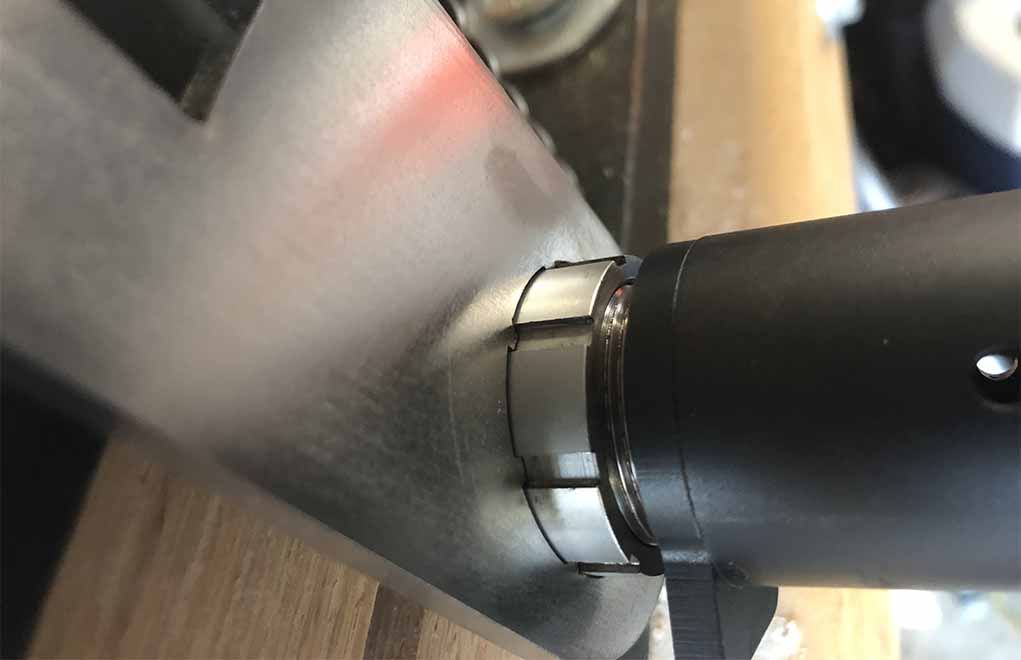
Boom! Boom! Boom! Adjust the optic. Boom! Shoot for group. Boom! Boom! Boom! Boom! The 140-grain Nosler Ballistic Tips averaged 3,158 fps on my chronograph.
The first five-shot group was just a bit under an inch. The second group was tighter, and the fourth group, which was shot a few days later, was tight enough—about ½ inch—to give my ammo claustrophobia.
I then fed the .280 Ackley Improved a steady diet of Nebraska’s finest: Hornady’s Precision Hunter 162-grain ELD-X. The Savage spit them out at 2,866 fps on average across three sets of five-shot groups. For whatever reason, the rifle that loved 140-grainers merely liked the 162-grain ELD-X shooting well under an inch but never as tight as the lighter, Oregon-born Noslers.
It shot everything sub-MOA without breaking a load development “sweat.” Things can, and will, get better for this rifle. However, let’s not lose sight of the fact that I just took a modern-day bolt-action rifle, swapped out its barrel and bolt face and then went and shot a sub-MOA group with two different factory loads … with about two hours of disassembly and reassembly work in my garage.
The Savage 110 Series rifle is a simple, well-engineered tinkering man’s dream come true. If you have rifle cartridge “attention deficit syndrome,” a Savage 110 Series rifle is a great starter kit to introduce you to the education of rifle self-customization. Along the way, you’ll learn all about torque, headspace, bolt face diameters, cartridge lengths, bullet twist rates, bedding stocks, mounting optics, etc. In short: A Savage rifle can be an excellent educational platform for shooters who want to become intimately involved in making their rifles personal, better or just different. That’s valuable to quite a few of us.
For more information on the Savage 110, please visit savagearms.com.
For more information on CarbonSix Barrels, please visit carbonsixllc.com.
The article originally appeared in the August 2019 issue of Gun Digest the Magazine.

Next Step: Get your FREE Printable Target Pack
Enhance your shooting precision with our 62 MOA Targets, perfect for rifles and handguns. Crafted in collaboration with Storm Tactical for accuracy and versatility.
Subscribe to the Gun Digest email newsletter and get your downloadable target pack sent straight to your inbox. Stay updated with the latest firearms info in the industry.

![Best Concealed Carry Guns In 2025 [Field Tested] Wilson Combat EDC X9S 1](https://gundigest.com/wp-content/uploads/Wilson-Combat-EDC-X9S-1-324x160.jpg)


![Best 9mm Carbine: Affordable PCCs [Tested] Ruger Carbine Shooting](https://gundigest.com/wp-content/uploads/Ruger-Carbine-Shooting-100x70.jpg)
![Best AR-15: Top Options Available Today [Field Tested] Harrington and Richardson PSA XM177E2 feature](https://gundigest.com/wp-content/uploads/Harrington-and-Richardson-PSA-XM177E2-feature-100x70.jpg)

In 2018 I modified my Sav 110E series K from the early 1980s from 30-06 to 280AI. I did not use the barrel nut, but shouldered the Bartlein barrel on a aftermarket recoil lug. I put in a Timney trigger and a B&C Aluminum bedded stock. I used a Glade bolt handle. I would not recommend this project. Stick to converting sporting 98 Mausers, pre 64 M70 Winchester, and Rem700s.